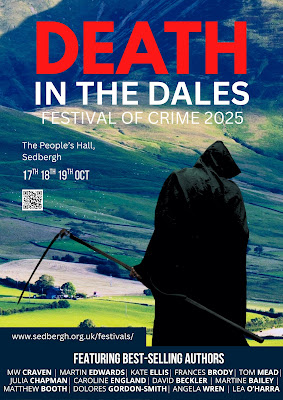... that I will be one of the many authors appearing at the Death in the Dales Festival of Crime in October. Read on for more info ...
The festival will take place in Sedbergh, a fabulous old farming community that has been in existence since the early Middle Ages, and will run over three days, from October 17th to 19th. There will be a mixture of author panels, discussions and performance - a real murder mystery for you, the attendees, to solve! There will be plenty of opportunities to buy books, too, if murder mystery is your bag.
The program has been finalised, and I can now let you know that I will be part of a panel discussion alongside David Beckler (author of the Mason and Sterling thrillers) and Lea O'Harra (author of the Inspector Inoue thrillers). We will be talking about setting our books in foreign locations and all the joy, tribulations and research that using an 'over the hill and faraway' setting can bring to a writer's work and life. Personally, I find my trips to France are essential for getting some of the details right. But do join us to hear what David and Lea also have to say. It will be, friend and author, Marsali Taylor who will be putting each of us under the spotlight. Marsali has appeared on the blog and if you want to catch up with that post you can read it Here
The full programme of events is available on the Sedbergh website, along with full details of how to purchase tickets. I really hope you can make this fabulous event, which was a runaway success in October last year. I am really looking forward to catching up with old friends and taking part in the whole weekend of bookishness!
Look out for my social media posts over the next few months. The Sedbergh website is Here and you can book your tickets Here








